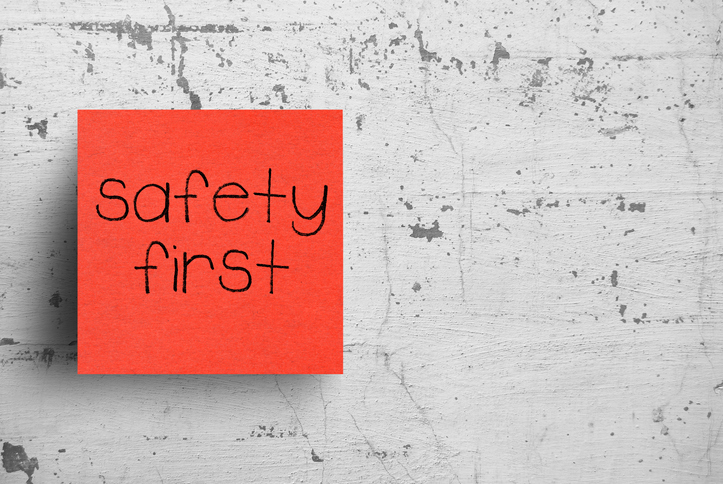Making an immediate difference in supporting affected people.

Alexander Dimitrevich
What is Psychological First Aid (PFA)?
Psychological First Aid (PFA) is an acute intervention to help children, adolescents, adults, and families in the immediate aftermath of disaster, terrorism, and other emergencies. PFA can also be provided to police, fire, and other emergency responders. Psychological First Aid is designed to reduce the initial distress caused by traumatic events and to foster short- and long-term adaptive functioning and coping. PFA meets four basic standards. It is:
- Consistent with research on risk and resilience following trauma
- Applicable and practical in field settings
- Appropriate for developmental levels across the lifespan
- Culturally informed and delivered in a flexible manner
PFA does not assume that all individuals will develop severe mental health problems or long-term difficulties. Instead, it is based on an understanding that survivors and others affected by such events will experience a broad range of early reactions (physical, psychological, behavioral, spiritual). Some of these reactions will cause enough distress to interfere with adaptive coping, and recovery may be helped by support from compassionate and caring providers.
Is PFA an Evidence-Based Intervention?
PFA is supported by behavioral health experts as the “acute intervention of choice” when responding to the psychosocial needs of children, adults and families affected by disaster, terrorism, and other emergencies.
This model still requires systematic empirical support. However, because many of the components have been guided by research, there is consensus among experts that these evidence-informed strategies provide effective ways to help survivors, responders, and others manage distress and adversity and to identify those who may require additional services.
PFA’s Five Evidence-Informed Principles
Research indicates that many individuals experience fear, anxiety, a need to connect with others, a sense of being overwhelmed, and/or hopelessness immediately after an event, and that addressing these issues is related to improved recovery. In order to address these survivor needs, PFA’s 5 basic principles are:
- SAFETY
Survivors may be concerned about their own safety, the safety of their loved ones and that of their community. Promotion of safety includes providing clear risk messages; addressing safety concerns; monitoring media reports/social messaging and addressing misinformation or distressing reports; and supporting family reunification, cohesion, and communication.
- CALMING
Disasters may cause fear, distress, and anxiety. Act in a calm manner to reduce others’ distress. Help survivors identify coping skills they have used in the past and new ones they may need to feel calmer.
- CONNECTEDNESS
Disasters often separate families, friends, and community members, and shatter the connectedness people share with one another. Help people reconnect with loved ones, or if that isn’t possible, connect them with those nearby in similar circumstances (same neighborhoods, faiths, families with young children). Help families and communities understand that recovery will be different for everyone and set up a tolerant environment for these differences.
- SELF AND COMMUNITY EFFICACY
After a disaster, individuals may feel overwhelmed and vulnerable. Nevertheless, every survivor and community has strengths upon which to draw. Help survivors to identify and apply their strengths, learn new strategies to cope with their situation, and begin to rebuild their lives and their communities.
- HOPE
When survivors feel that their world is falling apart and everything is hitting them at once, make every attempt to promote a sense of hope. Help them to engage in proactive activities and promote positive expectations that things will work out as best they can in the next hour, day, and week, even if they feel overwhelmed.
Who Delivers PFA?
PFA is designed for delivery by mental health and other response workers who provide early assistance to affected children, families, and adults as part of an organized response effort.
These providers may be embedded in a variety of response units, including first responders, governmental officials, health, public health, and mental health professionals, school staff, spiritual providers, media, social services staff and volunteers.
Where Should PFA Be Used?
PFA is designed to be adapted for any setting including shelters, schools, field hospitals and medical triage areas, family reception and assistance centers, acute care facilities, respite centers for first responders or other relief workers, emergency operations centers, crisis hotlines, disaster assistance service centers, homes, businesses, and other community settings.
Basic Objectives of PFA
Tailor your actions to the needs and priorities of each person you make contact with. Each encounter should include only those actions that are relevant, choosing from a combination of the following objectives:
- Establish a human connection in a non-intrusive, compassionate manner.
- Enhance immediate and ongoing safety and provide physical and emotional comfort.
- Calm and orient emotionally overwhelmed or distraught individuals.
- Help survivors tell you specifically what their immediate needs and concerns are and gather additional information as appropriate.
- Offer practical assistance and information to help address their immediate needs and concerns.
- Connect survivors as soon as possible to support networks, including family members, friends, neighbors, and community helping resources.
- Support adaptive coping, acknowledge coping efforts and strengths, and empower survivors. Encourage adults, children, and families to take an active role in their recovery.
- Be clear about your availability and your role, and (when appropriate) link the survivor to another member of your response team or to local community resources.
Professional Behavior and PFA
In the chaotic aftermath of an event, it is especially important to maintain professional behavior, including:
- Operate only within the framework of an authorized response system.
- Model healthy responses: be calm, courteous, organized, and helpful.
- Be visible and available.
- Maintain confidentiality as appropriate.
- Remain within the scope of your expertise and your designated role.
- Make appropriate referrals when additional expertise is needed or requested by the survivor.
- Be knowledgeable and sensitive to issues of culture and diversity.
- Pay attention to your own emotional and physical reactions, and practice self-care.
Preparing to Deliver PFA
Planning and preparation are important, so keep the following in mind:
- Stay up-to-date on the latest training and research on disaster/trauma mental health.
- Take additional courses on incident command systems, working with children, older adults, and other vulnerable populations, adapting PFA in different settings, situations, and populations.
- Participate regularly in drills or trainings to maintain skills.
- Educate yourself about the event, the current circumstances and those impacted by it before responding.
- Assess your readiness to respond by assessing your comfort level with this type of work, your current health, your family and work circumstances, and your ability to engage in self-care.
- Providing care and support in the immediate aftermath of disaster can be an enriching professional and personal experience that enhances life satisfaction through helping others. It can also be physically and emotionally exhausting. The following sections provide information to consider before, during, and after engaging in disaster relief work.
- In deciding whether to participate in disaster response, you should consider your comfort level with this type of work and your current health, family, and work circumstances. These considerations should include a variety of topics that are covered in the rest of this section.
Personal Considerations
Assess your comfort level with the various situations you may experience while providing PFA:
- Working with individuals who are experiencing intense distress and extreme reactions, including screaming, hysterical crying, anger, or withdrawal
- Working with individuals in non-traditional settings
- Working in a chaotic, unpredictable environment
- Accepting tasks that may not initially be viewed as mental health activities (e.g., distributing water, helping serve meals, sweeping the floor)
- Working in an environment with minimal or no supervision or, conversely, being micromanaged
- Working with and providing support to individuals from diverse cultures, ethnic groups, developmental levels, and faith backgrounds
- Working in environments where the risk of harm or exposure is not fully known
- Working with individuals who are not receptive to mental health support
- Working with a diverse group of professionals, often with different interaction styles
Health Considerations
Assess your current physical and emotional health status, and any conditions that may influence your ability to work long shifts, including:
- Recent surgeries or medical treatments
- Recent emotional or psychological challenges or problems
- Any significant life changes or losses within the past 6 to 12 months
- Earlier losses or other negative life events
- Dietary restrictions that would impede your work
- Ability to remain active for long periods of time and endure physically exhausting conditions
- Availability of enough medication for the total length of your assignment plus some extra days
Family Considerations
Assess your family’s ability to cope with you responding to a disaster:
- Is your family prepared for your absence, which may span days or weeks?
- Is your family prepared for you to work in environments where the risk of harm or exposure to harm is not fully known?
- Will your support system (family/friends) assume some of your family responsibilities and duties while you are away or working long hours?
- Do you have any unresolved family/relationship issues that will make it challenging for you to focus on your duties/responsibilities?
- Do you have a strong, supportive environment to return to after your assignment ends?
Work Considerations
Assess how taking time off to provide PFA might affect your work life:
- Is your employer supportive of your interest and participation in disaster work?
- Will your employer allow “leave” time from your job?
- Will your employer require you to utilize vacation time or “absence-without-pay time” to respond as a disaster worker?
- Is your work position flexible enough to allow you to respond to a disaster assignment within 24-48 hours of being contacted?
- Will your co-workers be supportive of your absence and provide a supportive environment upon your return?
Personal, Family, Work, Life Plan
If you decide to participate in disaster response, take time to make preparations for the following:
- Family and other household responsibilities
- Pet care responsibilities
- Work responsibilities
- Community activities/responsibilities
- Other responsibilities
- In providing PFA, it is important to recognize common and extreme stress reactions, how organizations can reduce the risk of extreme stress to providers, and how best to take care of yourself during your work.
- In providing PFA, it is important to recognize common and extreme stress reactions, how organizations can reduce the risk of extreme stress to providers, and how best to take care of yourself during your work. Common Reactions
- Extreme Stress Reactions Organizational Care Provider Self-Care
Common Stress Reactions
You may experience a number of common stress responses, including:
- Increase or decrease in activity level
- Difficulty sleeping
- Substance use
- Numbing
- Irritability, anger, and frustration
- Vicarious traumatization in the form of shock, fearfulness, horror, helplessness
- Confusion, lack of attention, and difficulty making decisions
- Physical reactions (headaches, stomach aches, easily startled)
- Symptoms of depression or anxiety
- Decreased social activities
Extreme Stress Reactions
You may experience more serious stress responses that warrant seeking support from a professional or monitoring by a supervisor. These include:
- Compassion stress: helplessness, confusion, isolation
- Compassion fatigue: demoralization, alienation, resignation
- Preoccupation or compulsive re-experiencing of trauma experienced either directly or indirectly
- Attempts to over-control in professional or personal situations
- Withdrawal and isolation
- Preventing feelings by relying on substances, becoming overly preoccupied by work, or making drastic changes in sleep (avoidance of sleep or not wanting to get out of bed)
- Serious difficulties in interpersonal relationships, including domestic violence
- Depression accompanied by hopelessness (which has the potential to place individuals at a higher risk for suicide)
- Unnecessary risk-taking
Organizational Care of Providers
Managers can reduce the risk of extreme stress by putting supports and policies in place. These include:
- Limiting work shifts to no more than 12 hours and encouraging work breaks
- Rotating providers from the most exposed assignments to lesser levels of exposure
- Mandating time off
- Identifying enough providers at all levels, including admin, supervision, and support
- Encouraging peer partners and peer consultation
- Monitoring providers who meet certain high-risk criteria (e.g., personally impacted by the disaster, multiple stresses, pre-existing conditions)
- Establishing supervision, case conferencing, and staff appreciation events
- Conducting trainings on stress management practices
Provider Self-Care
Activities that promote self-care include:
- Managing personal resources
- Planning for family/home safety, including making childcare and pet care plans
- Getting adequate exercise, nutrition, and relaxation
Using stress management tools regularly, such as:
- Accessing supervision routinely to share concerns, identify difficult experiences, and strategize to solve problems
- Practicing brief relaxation techniques during the workday
- Using the buddy system to share upsetting emotional responses
- Staying aware of personal limitations and needs
- Recognizing when one is Hungry, Angry, Lonely or Tired (HALT), and taking the appropriate self-care measures
- Increasing activities that are positive
- Practicing religious faith or spirituality
- Spending time with family and friends
- Learning how to “put stress away”
- Writing, drawing, and painting
- Limiting caffeine, tobacco, and substance use
Provider Self-Care Do’s
As much as possible make every effort to:
- Self-monitor and pace your efforts
- Maintain boundaries: delegate, say no, and avoid working with too many survivors in a given shift
- Perform regular check-ins with colleagues, family, and friends
- Work with partners or in teams
- Take relaxation/stress management/bodily care/refreshment breaks
- Utilize regular peer consultation and supervision
- Try to be flexible, patient and tolerant
- Accept that you cannot change everything
Provider Self-Care Don’ts
Avoid engaging in:
- Extended periods of solo work without colleagues
- Working “round the clock” with few breaks
- Negative self-talk that reinforces feelings of inadequacy or incompetency
- Excessive use of food/substances as a support
- After Relief Work, expect a readjustment period upon returning home. You may need to make personal reintegration a priority for a while.
- Organizational Care
- Provide Self-Care Do’s and Don’ts
Organizational Care of Providers
Managers should:
- Encourage time off for providers who have experienced personal trauma or loss
- Institute exit interviews to help providers with their experience. This should include information about how to communicate with their families about their work
- Encourage providers to seek counseling when needed and provide referral information
- Provide education on stress management
- Facilitate ways providers can communicate with each other by sharing contact information, or scheduling conference calls
- Provide information regarding positive aspects of the work
Provider Self-Care Do’s
Make every effort to:
- Seek out and give social support
- Check in with other relief colleagues to discuss relief work
- Increase collegial support
- Schedule time for a vacation or gradual reintegration into normal life
- Prepare for worldview changes that may not be mirrored by others in your life
- Participate in formal help to address your response to relief work if extreme stress persists for greater than two to three weeks
- Increase leisure activities, stress management and exercise
- Pay extra attention to health and nutrition
- Pay extra attention to rekindling close interpersonal relationships
- Practice good sleep routines
- Make time for self-reflection
- Practice receiving from others
- Find activities that you enjoy or that make you laugh
Provider Self-Care Don’ts
Make every effort to avoid:
- Excessive use of alcohol, illicit drugs, or excessive amounts of prescription drugs
- Making any big life changes for at least a month
- Negatively assessing your contribution to relief work
- Worrying about readjusting
- Even the best trained among us can’t always provide PFA because of a variety of life circumstances. Are you ready and able to respond?
General Guidelines for Delivering PFA
PFA is designed to be used only with those survivors who need it, not everyone you encounter. It is meant to be practical, tailored to the immediate needs and priorities of survivors, and conversational rather than clinical or formal. Therefore, it is important to:
- Observe first, to avoid being perceived as intruding in an effort to “help.” Most survivors will be able to handle the situation with their own resources, so take care not to undermine survivors’ own resources. Initiate contact only after you have observed the situation and have determined that contact is not likely to be intrusive or disruptive.
Focus your attention on how people are reacting and interacting in the setting. Individuals who may need assistance include those showing signs of acute distress, including individuals who are:
- Disoriented
- Confused
- Frantic or agitated
- Panicky
- Extremely withdrawn, apathetic, or “shut down”
- Extremely irritable or angry
- Exceedingly worried
- The best way to make contact is to provide practical assistance (food, water, blankets).
Engaging Survivors
Once you make contact:
- Ask simple respectful questions to determine how you may help.
- Maintain a calm presence. People take their cue from how others are reacting. By demonstrating calmness and clear thinking, you can help survivors feel they can rely on you.
- Be prepared that some survivors may either avoid you or flood you with contact.
- If survivors want to talk, be prepared to listen. When you listen, focus on hearing what they want to tell you and how you can be of help.
- Give information that directly addresses their immediate goals and clarify answers repeatedly as needed.
- Acknowledge the positive features of what they have done to keep safe.
- Speak calmly. Be patient, responsive, and sensitive.
- Speak slowly, in simple concrete terms; don’t use acronyms or jargon.
- Give information that is accurate and age-appropriate for those you are speaking to.
- When communicating through a translator or interpreter, look at and talk to the person you are addressing, not at the translator or interpreter.
Behaviors to Avoid
Your focus should be on providing practical, pragmatic support that is respectful and tailored to the immediate needs and priorities of survivors. With this in mind, behaviors to avoid are:
- Making assumptions about what survivors are experiencing or assuming that everyone will be traumatized.
- Assuming that all survivors want to talk or need to talk to you.
- Labeling reactions as “symptoms,” or speaking in terms of “diagnoses,” “conditions,” “pathologies,” or “disorders.”
- Talking down to or patronizing the survivor, or focusing on his/her helplessness, weaknesses, mistakes, or disability.
- “Debriefing” by asking for explicit details and reactions to what happened.
- Speculating or offering possibly inaccurate information. If you cannot answer a question, do your best to learn the facts.
Entering the Setting
Successful entry to the setting involves working within the framework of an authorized Incident Command System (ICS), in which roles and decision-making are clearly defined. Remember to:
- Establish communication and coordinate all activities with authorized personnel or organizations that are managing the setting.
- Learn as much as you can about the setting (e.g., leadership, organization, policies and procedures, security, and available support services).
- Get accurate information from authorized sources about what is currently happening, what services are available, and where they can be found. Such information is critical to reducing distress and promoting adaptive coping.
Using PFA for Groups
PFA can be offered in different types of group settings (e.g. classrooms, families, security briefings, child play areas).
When meeting with groups, keep the following in mind:
- Provide current information about the event.
- Attempt to dispel rumors and clarify any misunderstandings.
- Identify resources/services currently being offered.
- Discuss what steps are being taken to recover from the situation.
- Address safety concerns and safety procedures being implemented.
- Identify the group’s shared needs and concerns.
- Problem-solve strategies to address immediate needs and concerns. Do not let discussion lapse into complaints.
- Discuss ways the group members can help each other.
- Provide psychoeducation about a range of responses individuals can have after events.
- Describe coping strategies that others have found effective.
- Discuss the role of reminders and how to manage them.
- Identify where individualized services are being offered.
Be Sensitive to Culture and Diversity
Be sensitive to cultural, ethnic, religious, racial, and language diversity, and attempt to:
- Be aware of your own values and prejudices, and how these may agree with or differ from those of the community being served. Before providing services, training in cultural competence can facilitate this awareness.
- Help to maintain or reestablish customs, traditions, rituals, family structure, gender roles, and social bonds to help survivors cope with the impact of the current situation.
- Meet with cultural brokers/leaders to learn about the community being served, including how emotions and other psychological reactions are expressed, attitudes toward government agencies and receptivity to counseling.
- Ask those you’re serving what traditions or rituals are important to them.
Be Aware of At-Risk Populations
Be aware of individuals at special risk, including:
- Children, especially those:
- separated from parents/caregivers
- whose parents/caregivers, family members, or friends have died
- whose parents/caregivers were significantly injured or are missing
- involved in the foster care system
- Those who have been injured
- Those who have had multiple relocations and displacements
- Medically frail children and adults
- Those with serious mental illness
- Those with physical disabilities, illnesses, or sensory deficits
- Adolescents who may be risk-takers
- Adolescents and adults with substance abuse problems
- Pregnant women
- Mothers with babies and small children
- Disaster response personnel
- Those with significant loss of possessions (home, pets, family memorabilia)
- Those exposed firsthand to grotesque scenes or extreme life threat
- Economically disadvantaged groups who may be prone to mistrust, stigma, and fear
- Those living in disaster-prone regions or who have experienced prior trauma
Working with Children and Adolescents
- When working with young children, sit or crouch at the child’s eye level.
- Help school-age children verbalize their feelings, concerns and questions; provide simple labels for common emotional reactions (mad, sad, scared, worried). Do not use extreme words like “terrified” or “horrified” because this may increase their distress.
- Listen carefully and check in with the child to make sure you understand him/her.
- Be aware that children may show developmental regression in their behavior and use of language.
- Match your language to the child’s developmental level. Younger children typically have less understanding of abstract concepts like “death.” Use direct and simple language as much as possible.
- Talk to adolescents “adult-to-adult,” so you give the message that you respect their feelings, concerns, and questions.
- Reinforce techniques taught with the child’s parents/caregivers to help them provide appropriate emotional support to their child
Working with Older Adults
- Not all older adults are at risk. Many older adults have additional strengths from acquiring effective coping skills over a lifetime of dealing with adversities. It may be that only frail, injured or medically/functionally impaired older adults are likely to be at risk.
- For those who may have a hearing difficulty, speak clearly and in a low pitch.
- Don’t make assumptions based only on physical appearance or age. For example, don’t assume that a confused elder has irreversible problems with memory, reasoning, or judgment. Reasons for apparent confusion may include: disaster-related disorientation due to change in surroundings; poor vision or hearing; poor nutrition or dehydration; sleep deprivation; a medical condition or problems with medications; social isolation; or feeling helpless or vulnerable.
- An older adult with a mental health disability may be more upset or confused in unfamiliar surroundings. If you identify such an individual, help to make arrangements for a mental health consultation or referral.
Working with Survivors with Disabilities
- When needed, try to provide PFA in an area with minimal noise or other stimulation.
- Address the person directly, not the caretaker, unless direct comms is difficult.
- If communication (hearing, memory, speech) is impaired, speak simply and slowly.
- For those individuals who need interpretation, make sure you know how to access providers with these skills.
- Take the word of a person who claims to have a disability–even if the disability is not obvious or familiar to you.
- When you are unsure of how to help, ask, “What can I do to help?” and trust what the person tells you.
- When possible, enable the person to be self-sufficient.
- Offer a blind or visually impaired person your arm to help him/her move about in unfamiliar surroundings.
- If needed, offer to write down information and make arrangements for the person to receive written announcements.
- Keep essential aids (such as medications, oxygen tank, respiratory equipment, and wheelchair) with the person.
- Facilitate the specific needs that some individuals may need (e.g. video phone, materials in Braille, risk messages in closed caption).
What you should have in your Emergency Psychological Kit
| 1. | Psychologist’s workbook | 1 pc. |
| 2. | Blanket | 1 pc. |
| 3. | Herbal tea set (melissa, mint). | |
| 4. | Thermos | 1 pc. |
| 5. | Instant coffee | 10 disposable bags. |
| 6. | Disposable cups (glasses) | 25 pcs. |
| 7. | Disposable teaspoons | 25 pcs. |
| 8. | Disposable handkerchiefs | 2 packs of 10 pcs. |
| 9. | Soft children’s toys (for girls and boys) | 2 pcs. |
| 10. | Set of colored pencils | 1 set. |
| 11. | Album for drawing | 2 pcs. |
| 12. | Pens | 5 pcs. |
| 13. | Lumpy sugar | 1 package. |
| 14. | Flashlight (with a set of spare batteries) | 1 pc. |
| 15. | Cards for topping up a mobile phone account. | |
| 16. | Cigarettes | 2 packs. |
| 17. | Matches | 2 boxes. |
| 18. | Soft ball | 1 pc. |
| 19. | Power bank | |
| 20. | Transparent plastic bag for carrying various things | 2 pcs. |
| 21. | Personal hygiene products (soap, shampoo, etc.) | |
| 22. | Reflecting vest | |
| 23. | Badge with photo and logo of organization |
This kit must also contain standard medical first aid kit which includes tourniquets and gloves.
/* Custom Archives Functions Go Below this line */ /* Custom Archives Functions Go Above this line */








